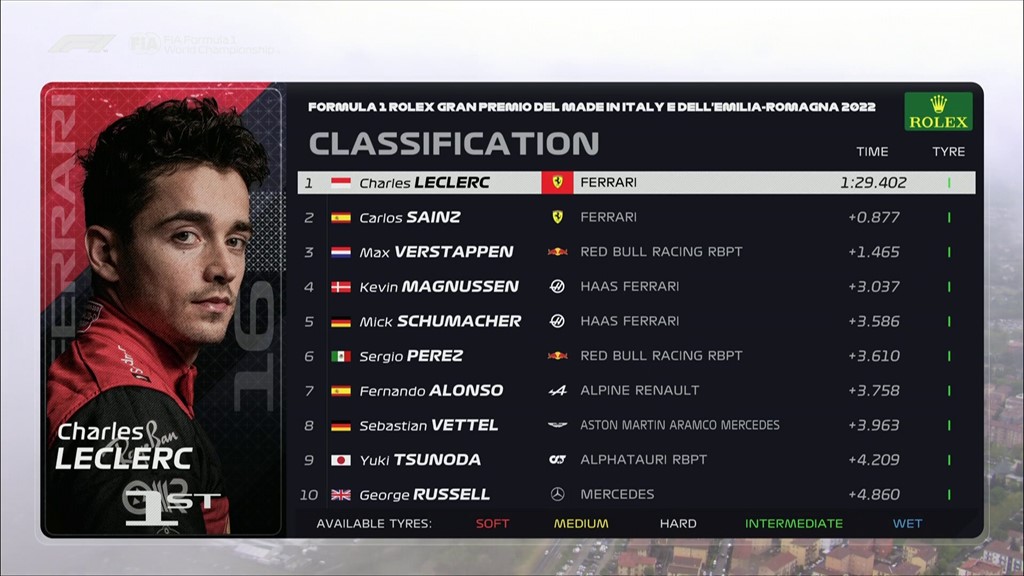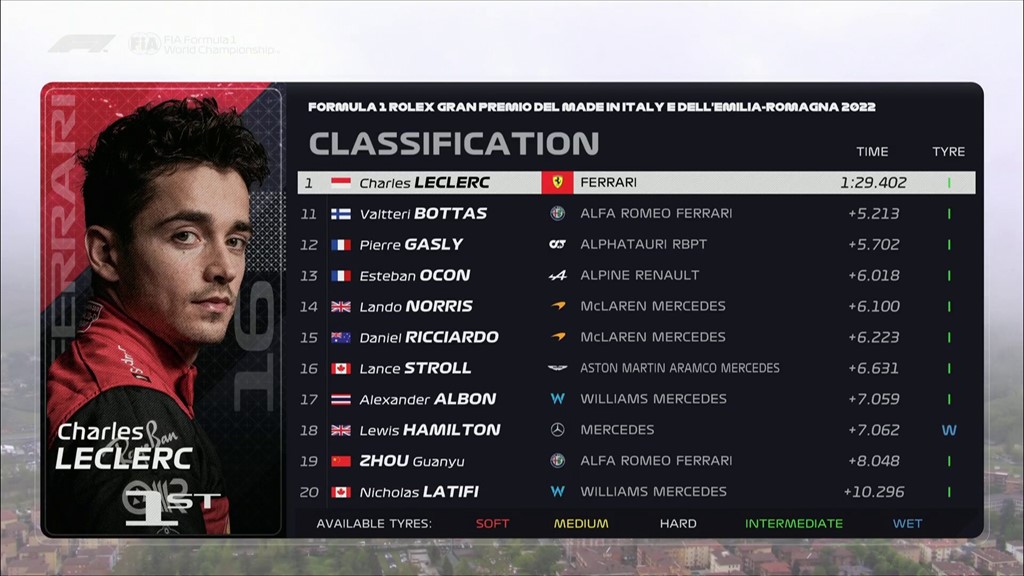Ahmer Baig
Full Member
- Joined
- Jul 8, 2017
- Messages
- 5,504
April 30 1994. It was the day before the annual San Marino F1 Grand Prix. Some 20 minutes into the final qualifying session, Ayrton Senna was standing in the vicinity of his blue and white Williams Renault. Preparing to head back out onto the circuit for one last fight against the clock, he glanced up at a nearby video monitor and froze. Removing his balaclava, the face of the 34-year-old Brazilian started twisting into a mask of horror. For playing out on the TV screen above him was the live and grisly demise of Simtek driver Roland Ratzenberger.
Snapping from the force of striking reinforced concrete at well over 300km/h, the Austrian's neck could no longer support the weight of his helmeted head and it slapped violently against the sides of the car's narrow cockpit. After visiting the accident scene, a distraught Senna stopped by the circuit's medical centre, where Professor Sid Watkins, medical chief of the International Automobile Federation, tried to console him. Between the tears, Watkins pitched a career move that has since become the stuff of legend.
"You know, Ayrton," he said, "you've been three times world champion, you're the fastest man in the world, and you like fishing, so, why don't you quit, and I'll quit, and we'll just go fishing."
After internalising the suggestion, Senna composed himself and answered: "Sid. I cannot quit."
He didn't, and the next day he was killed when he crashed while leading the race.
Ever since his first season with Toleman in 1984, the São Paulo native had harboured a tenacity that few, if any, of his competitors could rival.
In the paddock and on the grid, Senna crackled with a passionate, hot-headed intensity - strikingly at odds with the droid-like personalities dominating the sport today. He was a classic "Type A" personality for whom giving up was just not an option. The Brazilian saw willingness to quit as a sign of weakness - a terrible germ that, if given the chance to grow, would strangle any prospect of self-development. Senna strove for perfection in all realms of life, especially when it came to the high stakes game of Formula One. "You either do well or you forget it," he said during a 1980s TV interview. This rabid will to win was often belied by his quiet, almost reclusive demeanour.
Away from the circuit, he kept a low profile. He valued the intimacy of family and would often choose to distance himself from people when seated at his favourite restaurants.
Despite being mixed up in a sport filled with the biggest egos on the planet, Senna displayed a level of quiet humility more in keeping with that of a librarian than a world champion racing driver.
So where did all that trackside fire come from, that aggressive all-or-nothing driving ethic that thwarted the likes of the great Frenchman Alain Prost? Obviously an obscene amount of talent comes into it. But look beyond this and you'll discover Senna's fearless approach to racing was borne of faith.
A devout Catholic, Senna believed that God was responsible for giving him his first taste of Formula One - testing a Williams FW08 at Donington Park in July 1983. He maintained that divine intervention helped him feel relaxed and in control while he clocked 40 faultless laps - some of which bettered the efforts of the team's then star, Keke Rosberg. This unwavering trust in the Almighty, an almost beatific sense of protection, is perhaps what gave Senna the confidence to explore the limits more than other drivers at that time. On any given lap he could brake much later, accelerate sooner and corner harder than anybody else would dare.
That's why he racked up no fewer than 65 pole positions in his decade-long career. And also why he often found himself in a near trancelike state when strapped behind the wheel of a 480kW race machine. Equipped with manual gearboxes, no driver aids and considerably less down-force than today's Formula One cars, tarmac missiles like the McLaren MP4/4 were edgy beasts that took a fair amount of taming.
In trying to prove his worth, Senna would occasionally find himself in another realm. Like during qualifying for the 1988 Monaco Grand Prix where he dominated the final timing sheet.
"I suddenly realised that I was no longer driving conscious," he told the cameras. "And I was in a different dimension from me. The circuit for me was a tunnel through which I was just going, going, going. And I realised that I was well beyond my conscious understanding. Suddenly it frightened me. I drove back slowly to the pits and did not go out anymore that day." Imagine if Lewis Hamilton or Sebastian Vettel said this in a post-race interview today? There'd be an international uproar.
In a sport built upon data and physics and science and engineering, Senna's approach to driving was often the target of criticism. "Ayrton has a small problem," Prost said in a 1989 interview. "He thinks that he can't kill himself because he believes in God and things like this. And I think that is very dangerous for the other drivers."
Yet Senna shrugged it off. Instead of distancing himself from his faith, he got closer to it. Particularly when faced with the crippling bureaucracy and horrific accidents that plagued the Formula One grid back in those days. To mask his vulnerability, the Brazilian would channel his belief system and push harder than ever. This will to fight against all odds helped Senna to win three world championships and turned him into an icon, a national hero, in his poverty-stricken homeland.
Brazil simply idolised Senna. His success, his pugnacious driving style and incredible sense of patriotism gave the man in the street good reason to celebrate. In an era marred by inflation, military rule and political instability, he provided the general populous with a much-needed shot of inspiration. He became the country's best-loved ambassador.
While many famous compatriots tried to downplay their Brazilianness, Senna celebrated and savoured his origins. After winning a grand prix he would often perform a victory lap with the national flag furling from inside the cockpit of his car. On the surface this looked like Senna was merely revelling in mass adoration. But as with everything else in the man's life, his celebrity went so much deeper.
Even though he came from a family of means and was earning a fortune in one of the world's most glamorous sports, Senna felt it his duty to try to uplift the poor.
Fortunately, he had the perfect launch pad from which to do so. "People have to have a chance, a basic chance at least, for education, nutrition and medical care. If this does not begin to happen, then there is little hope for the future. Formula One is nothing compared to those things."
He quietly donated millions of his personal fortune (an estimated $400-million) to aid in the upliftment of Brazil's most underprivileged.
When you look through his life it becomes evident that Senna was obsessed with the notion of bettering himself as a human being. And perhaps he thought the best opportunity to do so resided in the sport that would lead to his death. An arena of extreme highs, tragic lows and ceaseless political turmoil, Formula One moulded him into the thoughtful and eloquent man he had become at the height of his career. It was his catalyst for enlightenment.
"For me, this research is fascinating. Every time I push, I find something more, again and again. But there is a contradiction. The same moment that you become the fastest, you are enormously fragile. Because in a split second, it can be gone. All of it. These two extremes contribute to knowing yourself, deeper and deeper."
In that intense heat of on-track competition, Senna found something divine, an intangible form of energy that seemed to power his entire life force. Formula One was his manna. Which is why even in the face of death he could never, would never, quit.
Of safety and sacrifice
It took the demise of one of the world's greatest racing drivers to forever change the face of safety in Formula One. After Ayrton Senna was laid to rest it was clear that something drastic had to be done to prevent more fatalities.
With Max Mosley and Professor Sid Watkins (a neurosurgeon) taking the lead, the cars were given a much-needed overhaul.
The most obvious change was to raise the sides of cockpits to better protect the driver's head from obstacles and debris in the event of a crash. Other innovations included collapsible steering columns, the compulsory wearing of head and neck support devices, and far more stringent crash test evaluations - especially of the driver's all-important carbon-fibre "survival cell".
Much attention was also paid to the race circuits themselves. Run-off zones were extended and the number of high G-force corners reduced.
The combination of all these and many other factors had an almost immediate effect on driver safety.
Thank you for sharing this. What a great read.






